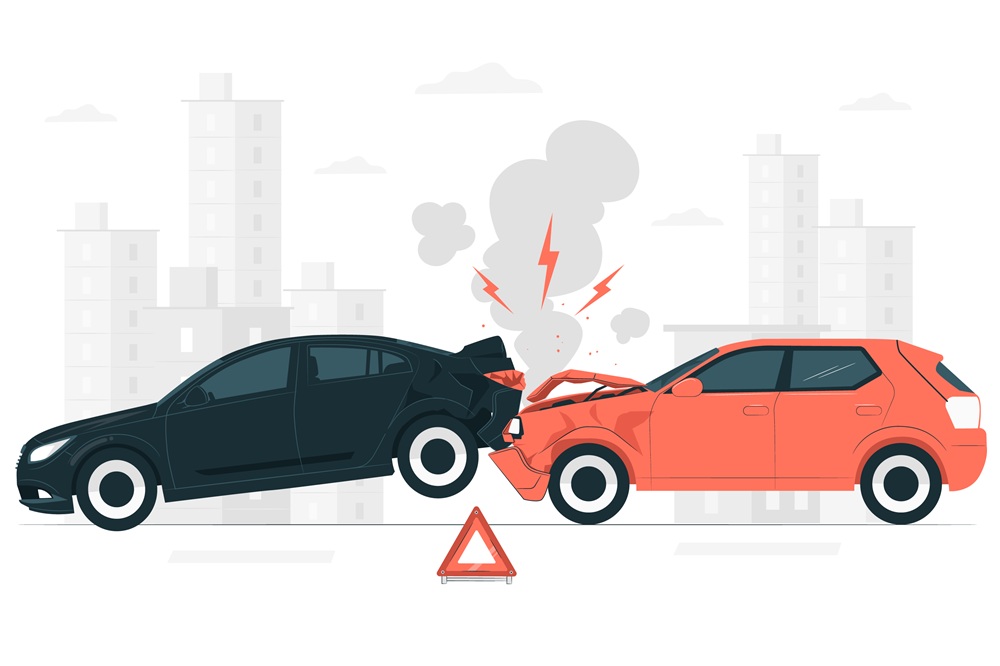Car accidents are unpredictable and often happen in the blink of an eye, leaving those scrambling to understand the intricacies of responsibility and liability. Determining who is at fault in these scenarios is crucial from a legal standpoint and regarding insurance claims and compensation recovery. Comprehending the various facets of liability can clear up confusion and provide the insights necessary to navigate these challenging situations effectively.
Key Takeaways
- Liability in car wrecks involves understanding multiple factors, including traffic laws, driver behavior, and environmental conditions.
- Insurance companies play a significant role in determining fault, but third-party investigations may also be involved.
- Hiring an experienced attorney can significantly assist in ensuring fair assessment and compensation.
- When determining responsibility, the significance of obtaining evidence and witness accounts cannot be emphasized enough.
Determining Liability: The Basics
Determining liability in a car accident generally hinges on the concept of negligence. Negligence refers to a driver failing to take reasonable care, leading to an accident. This may involve breaking traffic laws, speeding or running a red light, or even simple distractions like texting while driving. However, as straightforward as it may seem, establishing negligence can be complex, especially when multiple factors come into play.
The Role of a Car Wreck Attorney
Engaging a seasoned car wreck attorney can become indispensable, given the complexities involved. Attorneys adept at handling vehicle accident cases can deftly navigate the nuances of liability laws and traffic regulations pertinent to the accident. They work to gather and analyze evidence, interview witnesses, and build a compelling case aimed at ensuring rightful compensation for their clients. Their expertise can also facilitate negotiations with insurance companies, often mitigating payment to protect their interests.
Choosing the right legal advocate can make a substantial difference in the outcome of a car accident case, especially when liability is contested or unclear. A skilled motor vehicle accident lawyer with experience handling cases involving serious injuries, insurance disputes, and multi-vehicle collisions can guide clients through the legal and procedural challenges following an accident. From initial investigations to settlement negotiations or trial representation, their role is critical in protecting the rights of injured drivers and passengers.
Beyond just guidance, a dedicated legal team will meticulously investigate every aspect of the incident, from gathering police reports and witness statements to analyzing accident reconstruction data. This thorough approach is essential for accurately determining fault and building a strong case. For individuals facing the complex aftermath of a collision, securing representation from an experienced Auto Accident Attorney ensures that all avenues for compensation are explored. Such legal professionals work tirelessly to hold negligent parties accountable and secure fair settlements for medical expenses, lost wages, and pain and suffering, allowing victims to focus on recovery.
Insurance Companies and Fault Assessment
Insurance companies play a pivotal role in the determination of fault. Once an accident is reported, insurers typically initiate an investigation to assess liability. They employ adjusters who examine the accident scene, vehicles involved, and related documentation, such as police reports, to ascertain which party is at fault. However, insurers mainly seek to minimize payouts, leading to potential disputes over claim amounts.
In some instances, each party’s insurance company may assign varying levels of blame to respective policyholders, which can affect the compensation amounts each party can recover. This comparative or contributory negligence process is another area where personalized legal guidance is immensely beneficial.
Evidence and Documentation
Evidence collection is paramount in establishing liability in car accidents. Photographic records of the collision scene, car damage, and any apparent injuries to anyone involved are all critical pieces of evidence. Gathering witness statements immediately following an accident can provide first-hand accounts and help corroborate the events.
Furthermore, this collected evidence can be significantly helpful if the accident occurred as a result of negligence. When a personal injury claim is filed by the victim, it’s usually advisable to partner with experienced legal professionals, such as the team at Lawsuit Legal, who can make a significant difference in gathering and organizing the necessary evidence.
Police reports serve as another crucial document, often offering an unbiased assessment of the accident scene. These reports include observations by responding officers and sometimes even indicate which driver may be considered at fault based on their initial assessment. However, police assessments aren’t legally binding, so corroborative evidence is vital.
Environmental and Other Contributing Factors
While driver negligence constitutes a significant factor in many accidents, environmental conditions can also influence liability. Factors such as inclement weather, defective roadway conditions, or obstructions can contribute to accidents and affect fault determination.
In unique cases, vehicle malfunctions or manufacturing defects might shift liability away from the driver. Professional legal advice from a skilled Car Accident Attorney can pinpoint such issues, potentially shifting liability to third parties like vehicle manufacturers or municipal bodies responsible for road maintenance.
Setting Expectations and Moving Forward
Understanding car accident liability is instrumental in managing expectations regarding compensation and claims processes. An accurate liability assessment is the basis for negotiating settlements and receiving fair compensation for damages and medical expenses incurred.
Proactively documenting the accident scene, consulting an experienced attorney, and adhering to legal counsel can lead to more favorable outcomes.
Conclusion
Liability determination after a car wreck signifies more than assigning blame—it’s about understanding and navigating the legal frameworks that assure justice and compensation for all parties involved. Recognizing the complex tapestry of negligence, environmental conditions, and legal requirements necessitates a nuanced approach, often aided by legal professionals. Whether through insurance company negotiations or court proceedings, the ultimate aim remains to achieve fairness and rightful compensation.
Should the unfortunate event of a car wreck occur, being well-versed in liability intricacies can empower individuals, affording them greater control over subsequent legal and financial ramifications.










